Publications and Theses
Droubi, O. K., Bauer, A. M., Bonamici, C., Nachlas, W. O., Garber, J. M., Tappa, M. J., and Reimink, J. R. (2025). Eoarchean–Paleoproterozoic Tectonothermal History of the Acasta Gneiss Complex Constrained by Titanite and Apatite Petrochronology. Geochemistry, Geophysics, Geosystems, 26(7), e2025GC012294.
Droubi, O. K., Cipar, J. H., Smye, A. J., & Garber, J. M. (2024). Xenolith petrochronology (San Luis Potosi, Mexico) constrains heat sources for Cenozoic ultrahigh‐temperature metamorphism in the lower crust. Journal of Geophysical Research: Solid Earth, 129(8), e2024JB029138.
Droubi, O. K., Bauer, A. M., Bonamici, C., Nachlas, W. O., Tappa, M. J., Garber, J. M., & Reimink, J. R. (2023). U‐Th‐Pb and trace element evaluation of existing titanite and apatite LA‐ICP‐MS reference materials and determination of 208Pb/232Th‐206Pb/238U date discordance in Archaean accessory phases. Geostandards and Geoanalytical Research, 47(2), 337-369.
Droubi, O. K. (2022) Multiphase Petrochronology of Archean Gneiss Complexes: Unraveling polymetamorphic records at the Acasta Gneiss Complex, Northwest Territories, Canada and the Watersmeet Gneiss Dome, MI, USA (Master’s thesis, University of Wisconsin-Madison)
Droubi, O. K. (2020). Origins and evolution of the lower crust beneath central Madagascar: Insights from granulite-facies xenoliths in rift basalts (Undergraduate Senior Honors thesis, University of California-Santa Barbara) [available upon request]
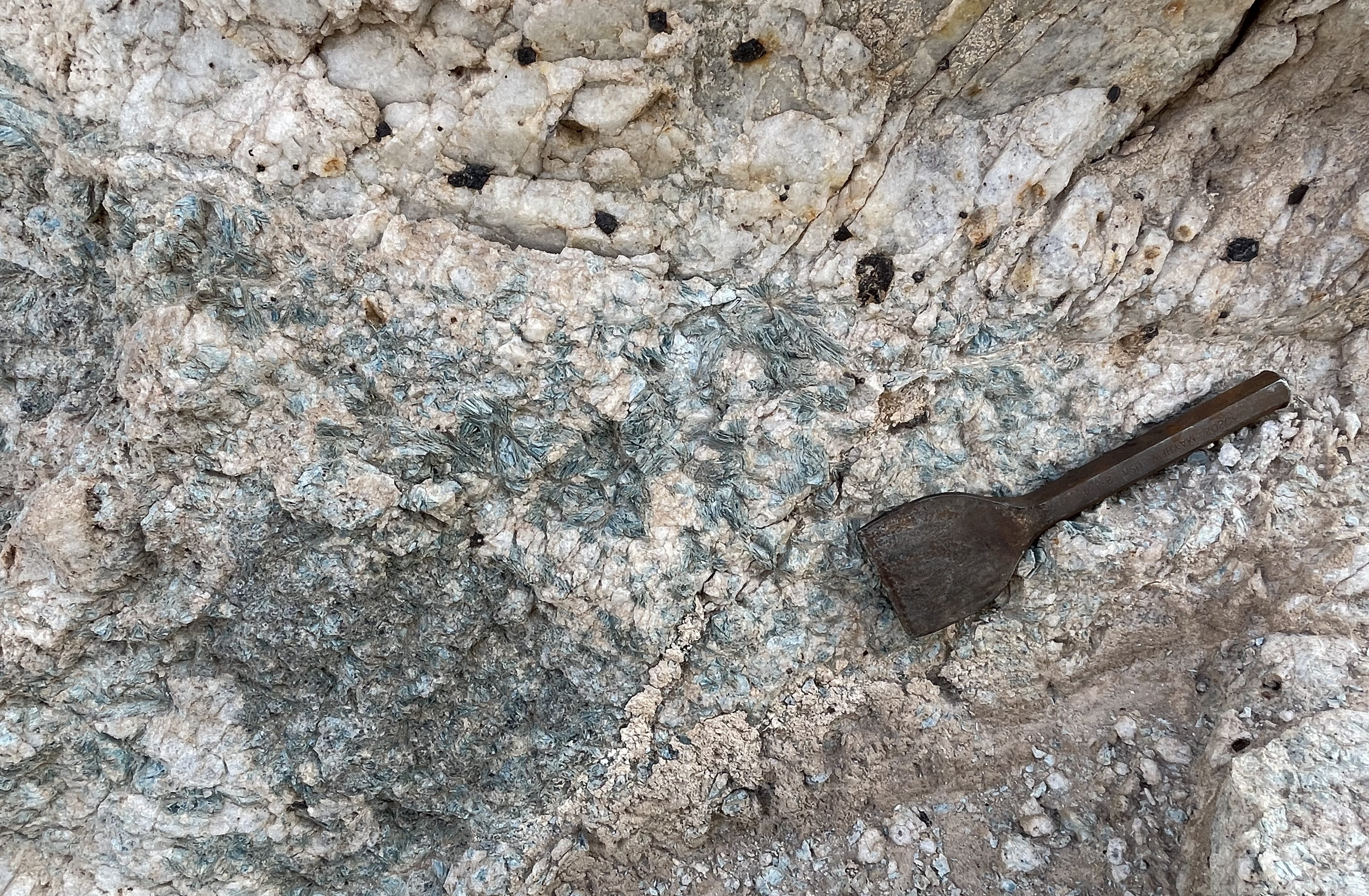 Kyanite quartzite in southwestern CA.
Kyanite quartzite in southwestern CA.

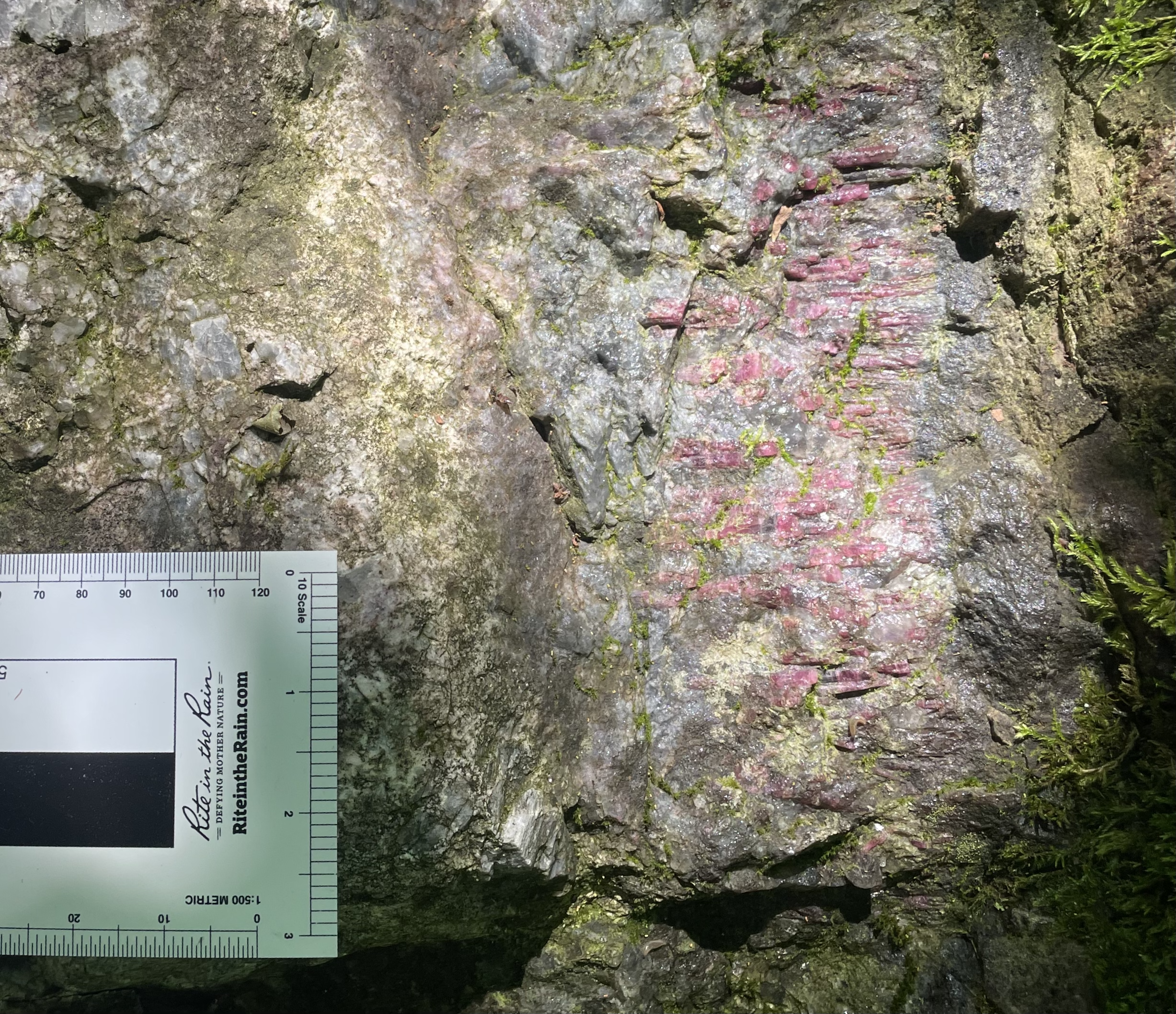 Pegmatite wall zone with pink elbaite (Li-rich tourmaline) in WI.
Pegmatite wall zone with pink elbaite (Li-rich tourmaline) in WI.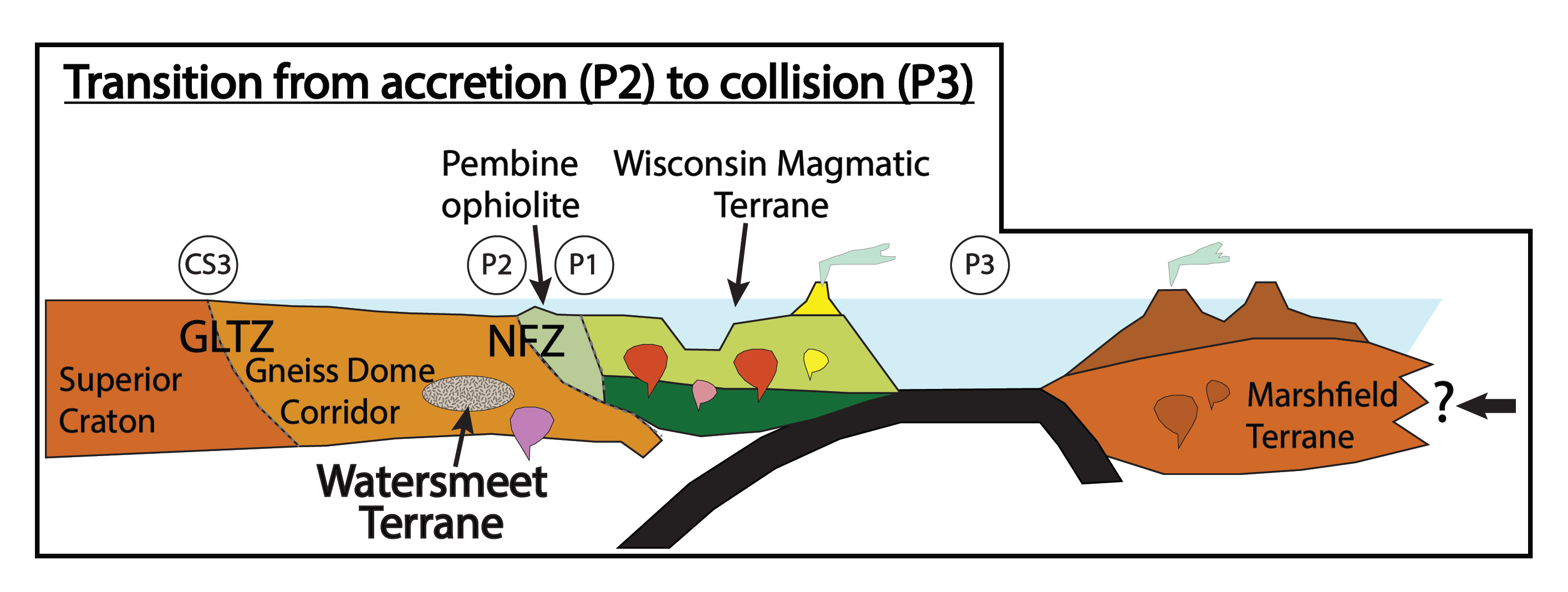 Cartoon depicting final stage of Penokean Orogeny.
Cartoon depicting final stage of Penokean Orogeny.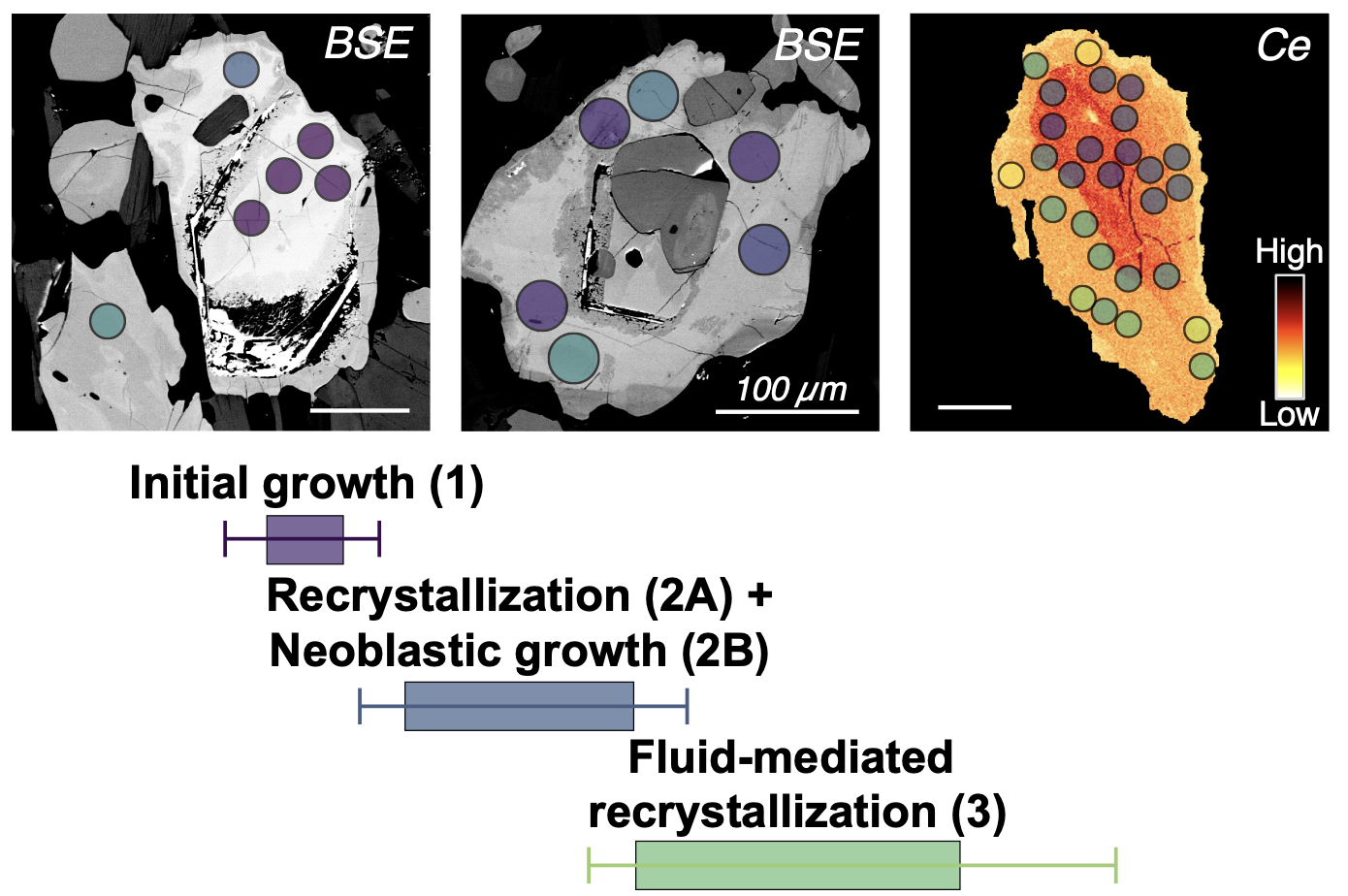 I use context from textural and chemical microanalysis to inform U-Pb age interpretations from LA-ICP-MS data.
I use context from textural and chemical microanalysis to inform U-Pb age interpretations from LA-ICP-MS data.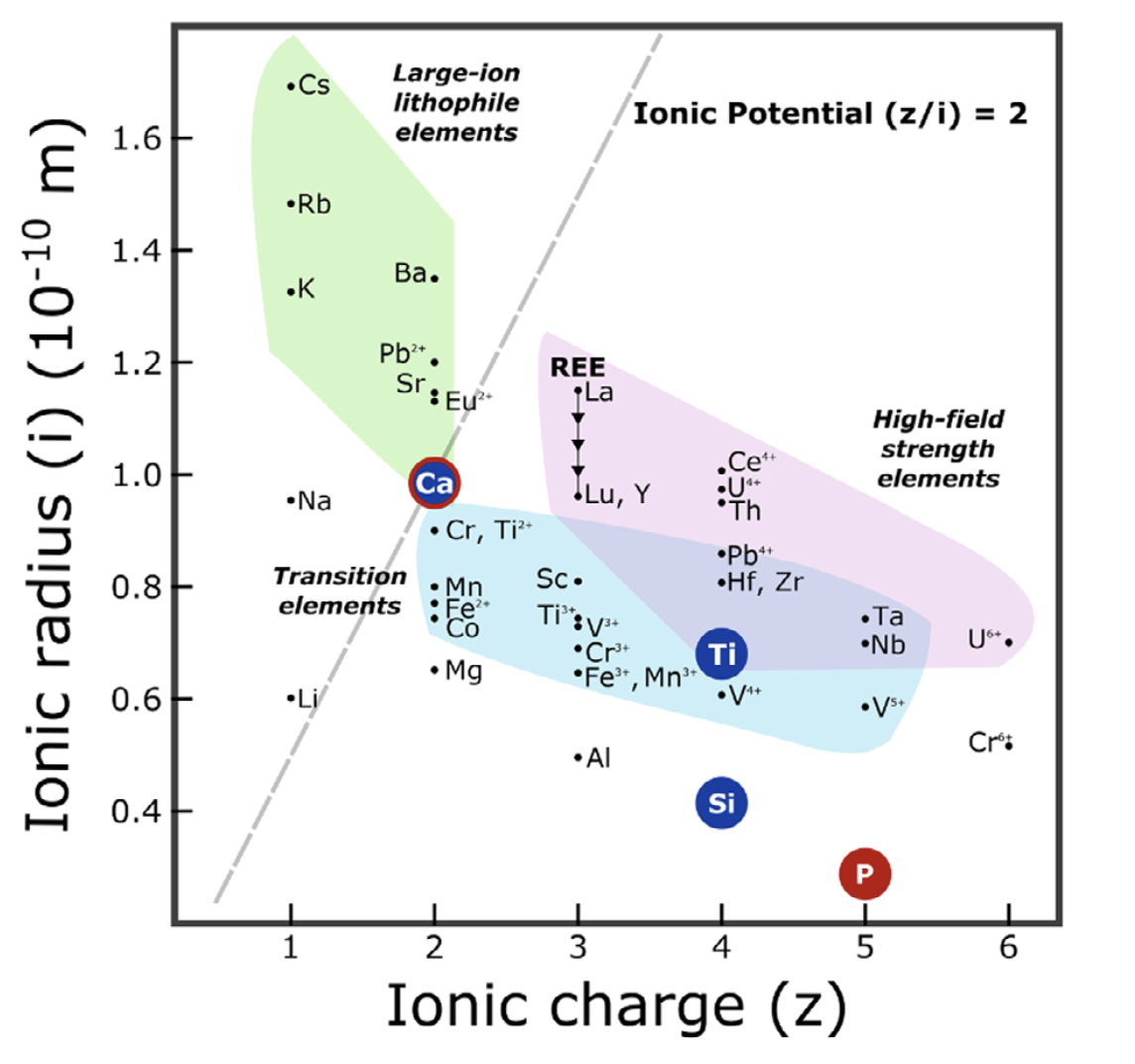 Figure depicting the potential of certain cations to substitute into titanite or apatite.
Figure depicting the potential of certain cations to substitute into titanite or apatite.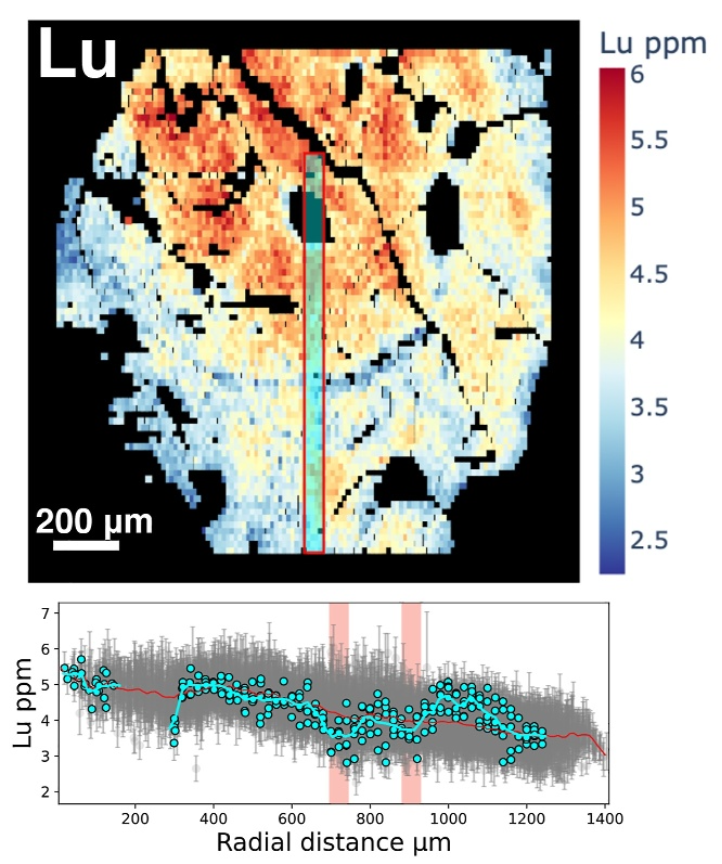 Figure showing Lu zoning in garnet from a Mexican lower crustal xenolith.
Figure showing Lu zoning in garnet from a Mexican lower crustal xenolith.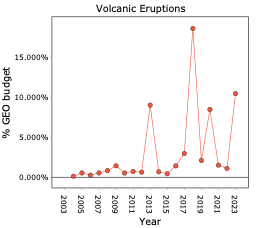 Preliminary forecast of funding allocated toward grant abstracts with "volcanic eruptions" as a key term.
Preliminary forecast of funding allocated toward grant abstracts with "volcanic eruptions" as a key term.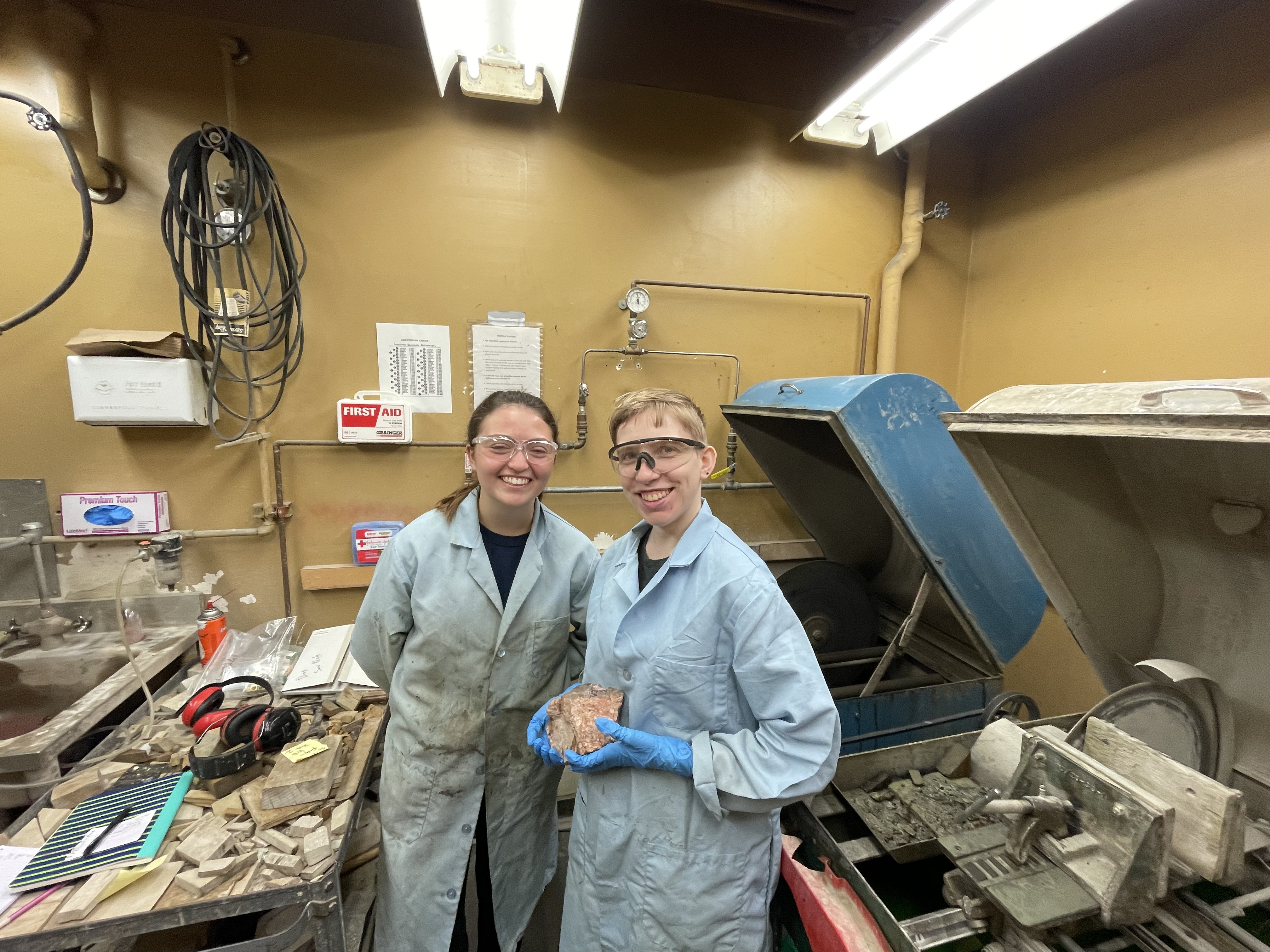 Undergraduate researchers prepping rock billets to be made into thin sections.
Undergraduate researchers prepping rock billets to be made into thin sections.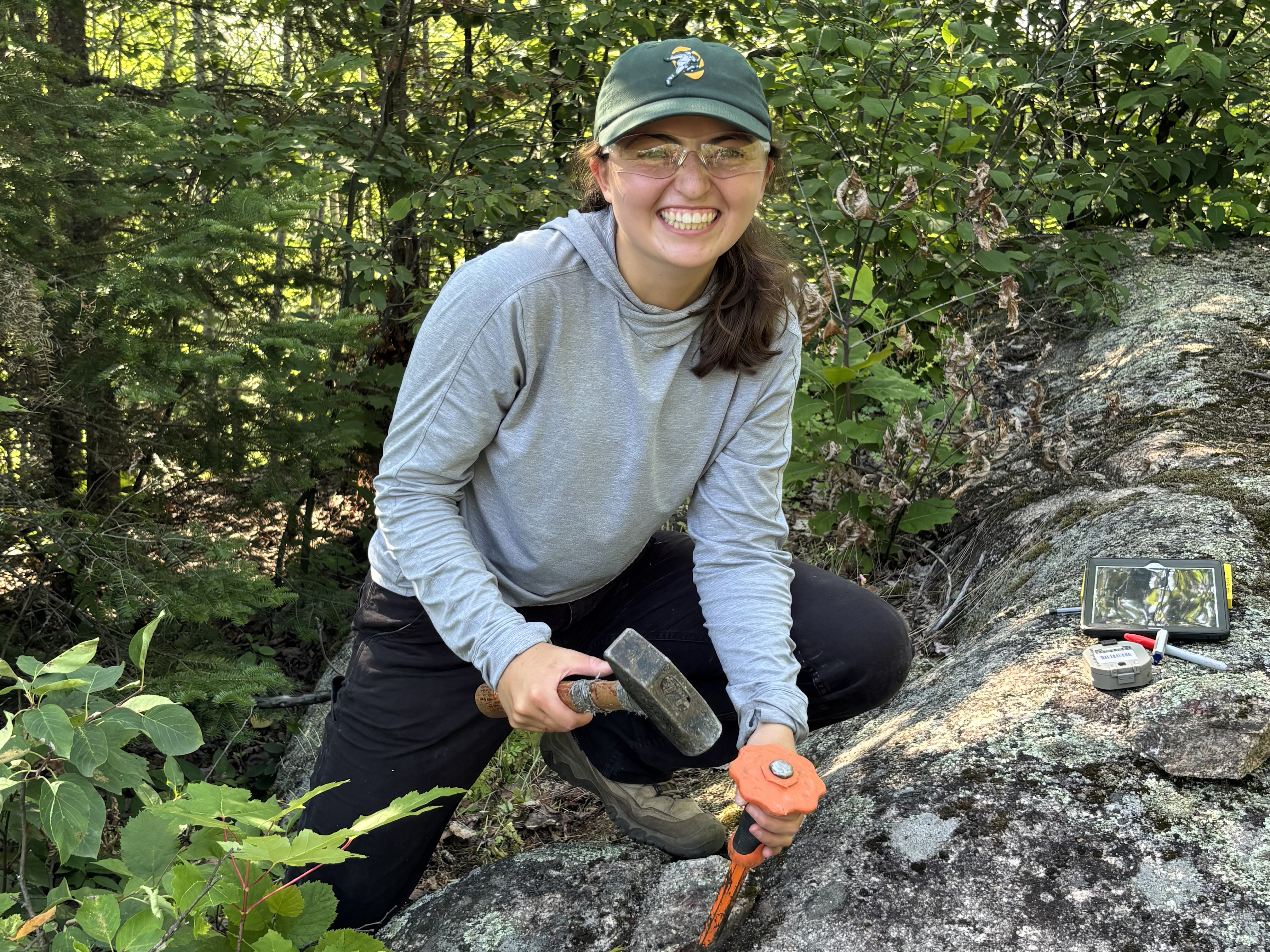 Senior thesis student conducting field research on granite emplacement in WI.
Senior thesis student conducting field research on granite emplacement in WI.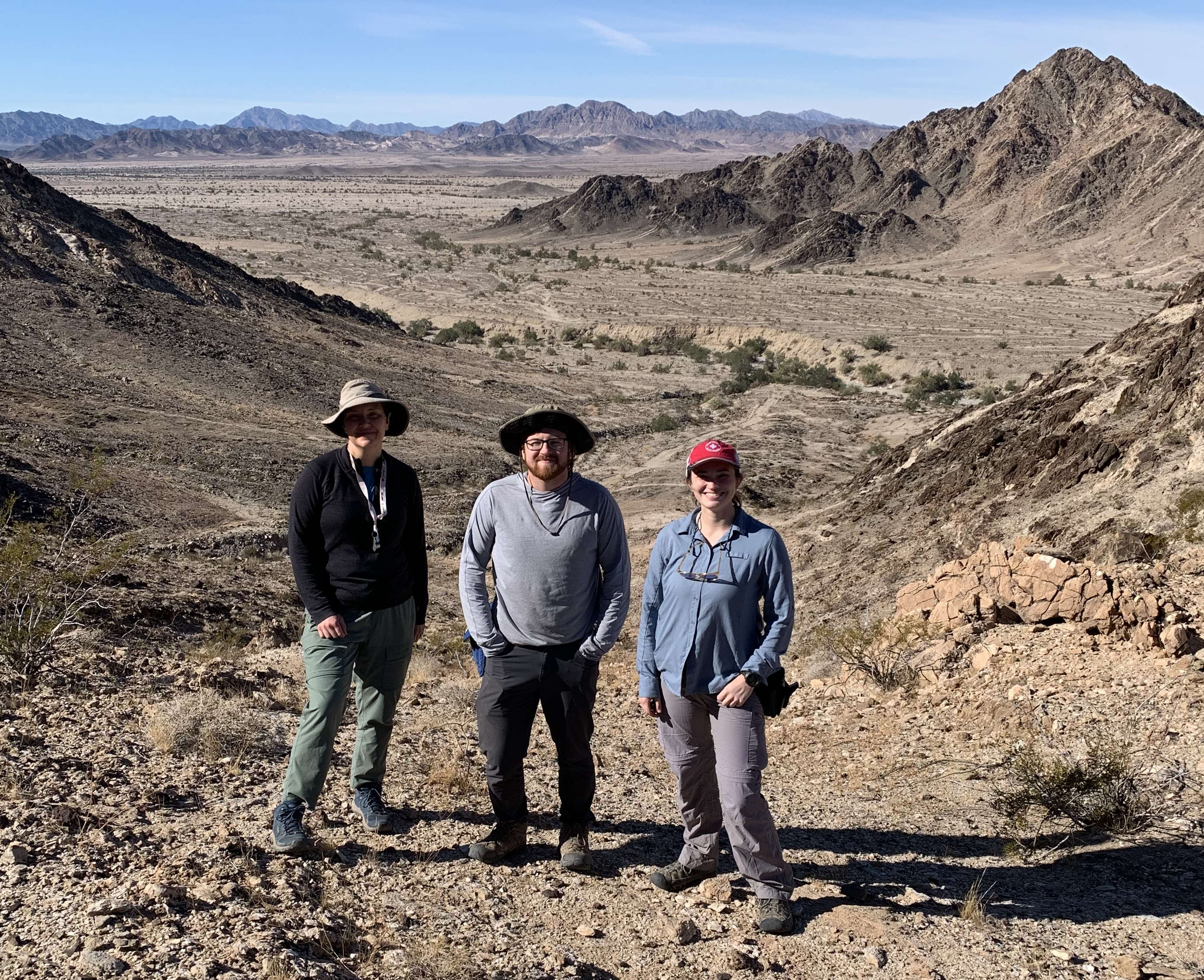 Big Maria Mountains, CA, USA (2024)
Big Maria Mountains, CA, USA (2024)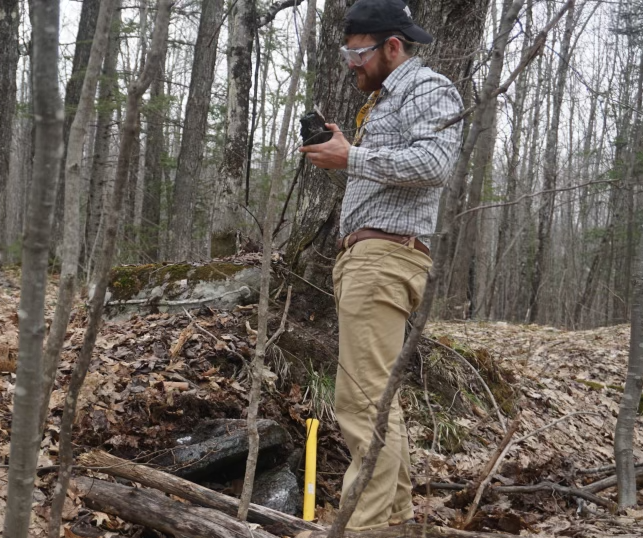 Watersmeet, MI, USA (2022)
Watersmeet, MI, USA (2022)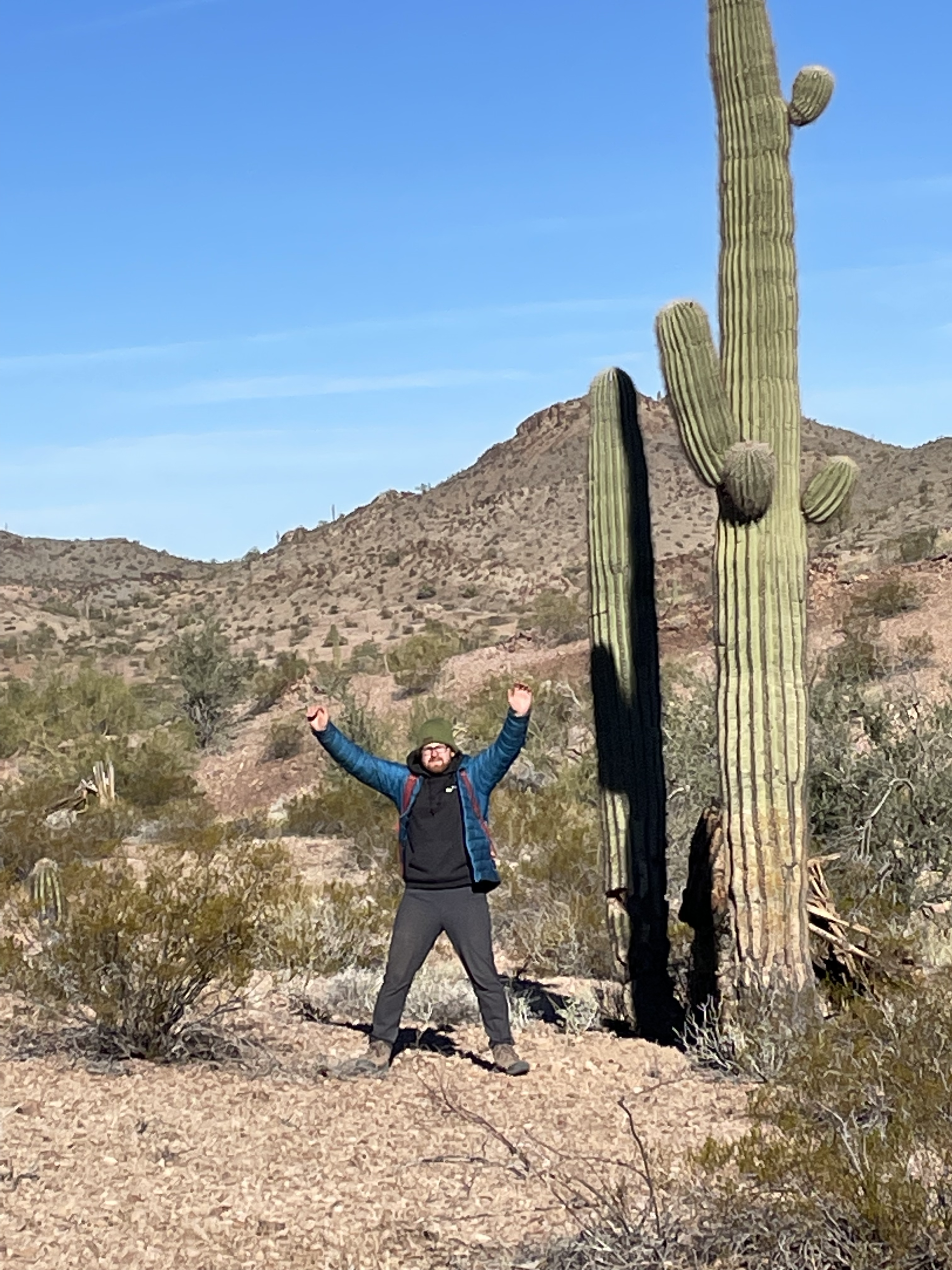 Cemetery Ridge, AZ, USA (2024)
Cemetery Ridge, AZ, USA (2024)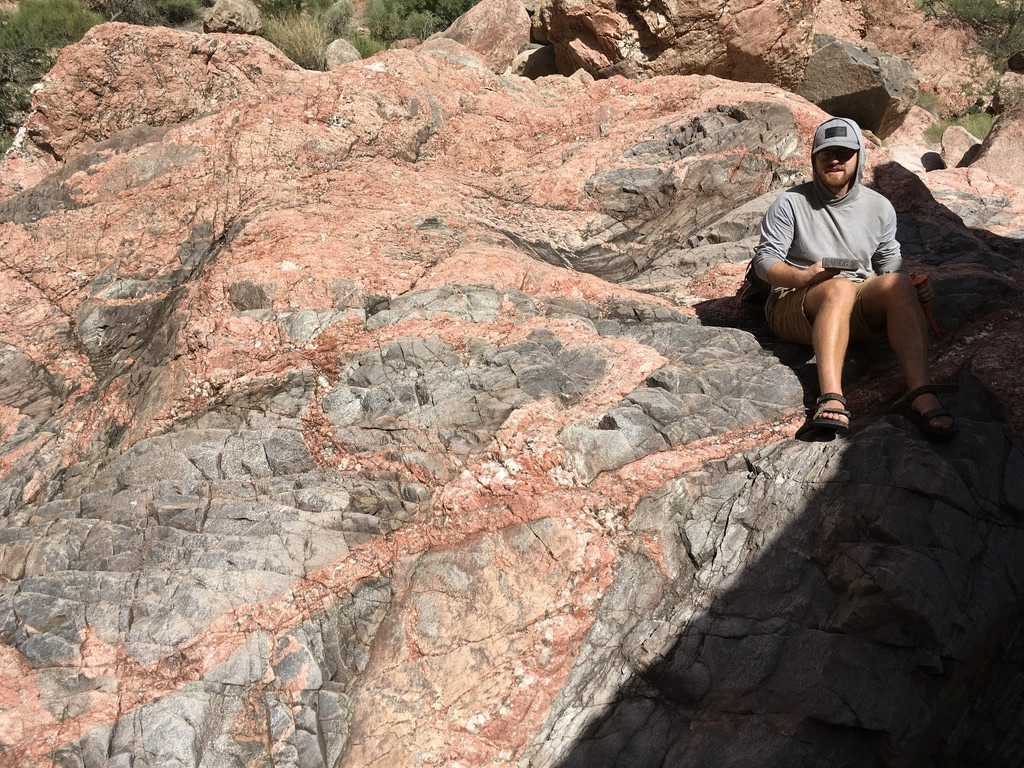 Grand Canyon, AZ USA (2023)
Grand Canyon, AZ USA (2023)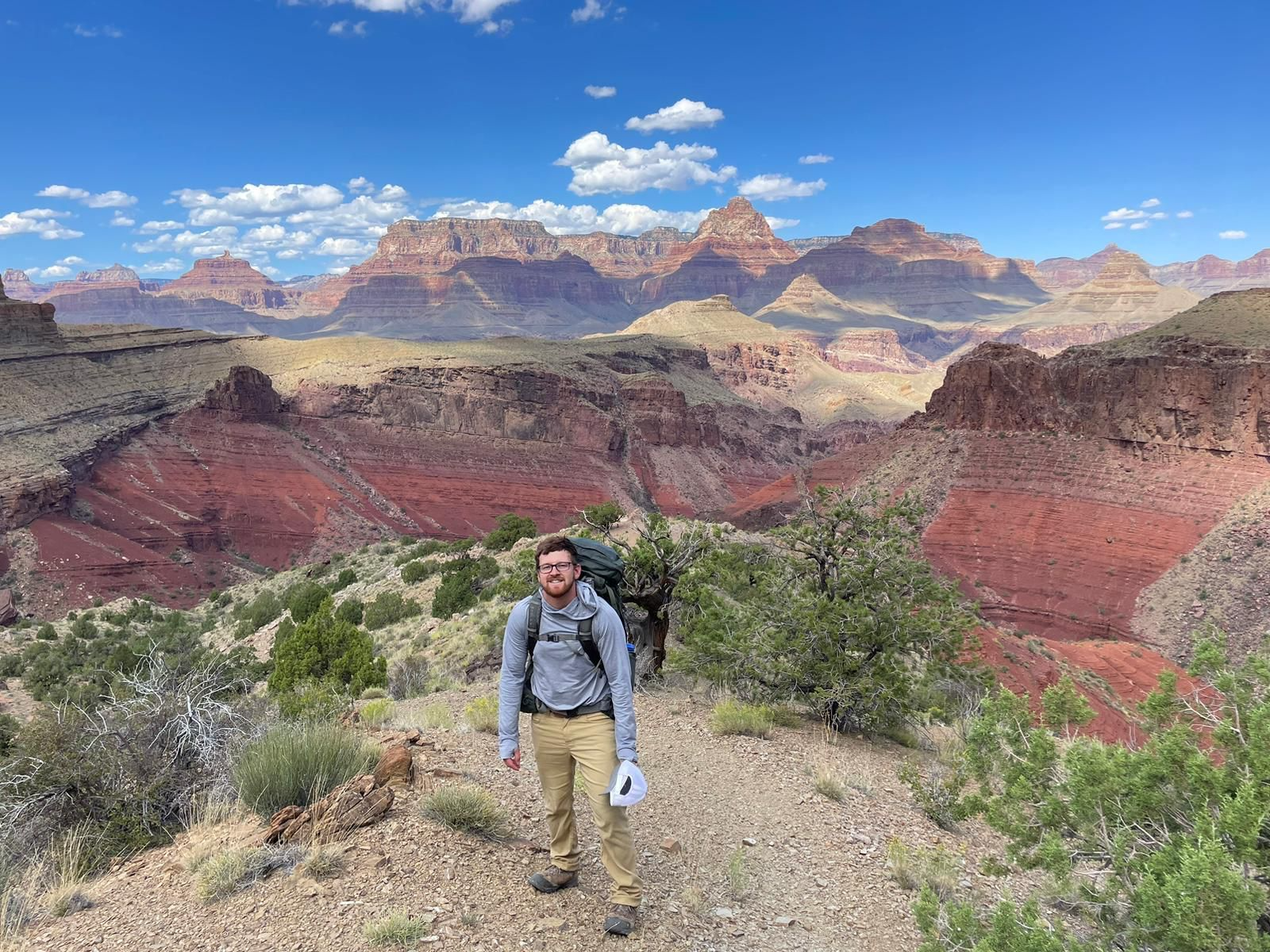 Grand Canyon, AZ, USA (2023)
Grand Canyon, AZ, USA (2023)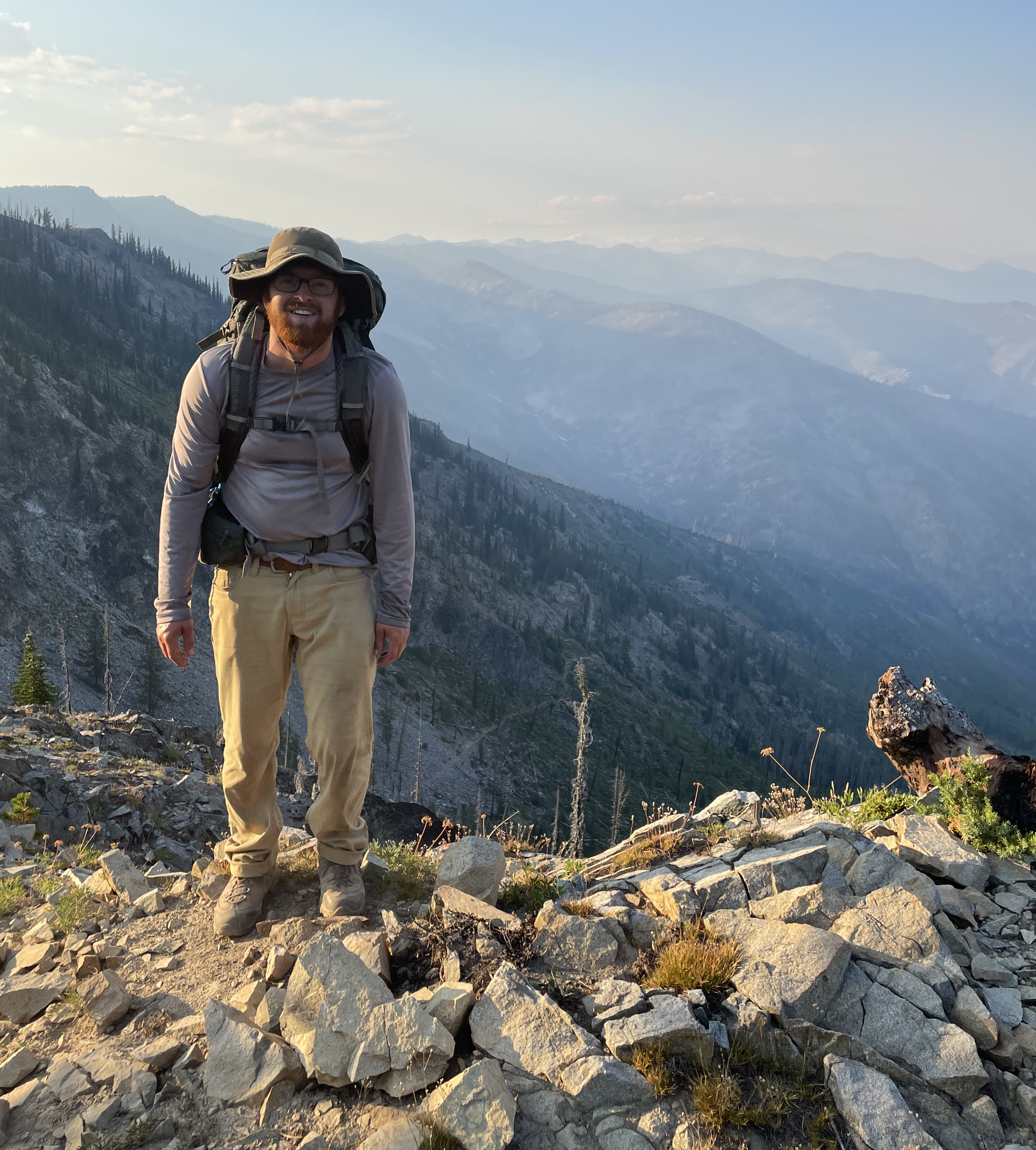 North Cascades, WA, USA (2022)
North Cascades, WA, USA (2022)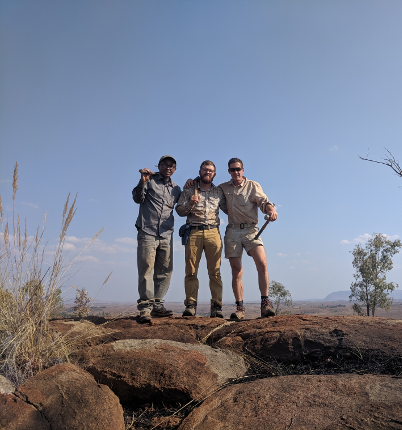 Madagascar (2019)
Madagascar (2019)